Name of Tools for Gardening. Learn about the 33 essential gardening tools plus their names to improve your gardening abilities. Everything you need to know about these products, from their uses to advice from industry professionals, is included in this comprehensive reference.
For many aficionados, caring for their own small patch of paradise is more than simply a hobby; it’s a way of life. The appropriate equipment is essential for successful gardening because they not only facilitate your activities but also guarantee a flourishing garden. The purpose, application, and advice of the Essential 33 + name gardening tools will be covered in full in this article. Whether you’re an experienced gardener or a novice, this guide will teach you how to use your green thumb to grow a lovely and abundant garden.
1. Pruning Shears
Pruning shears, sometimes referred to as hand pruners or secateurs, are essential gardening equipment. Pruning precisely is a snap because of their razor-sharp, scissor-like blades. Pruning shears ensure clean cuts without harming the surrounding plant tissue, whether you’re trimming back wasted blossoms, eliminating deadwood, or shaping shrubs. Get high-quality, ergonomic pruning shears that are comfortable in your hand while making your purchase. To keep the blades effective, clean and sharpen them frequently.
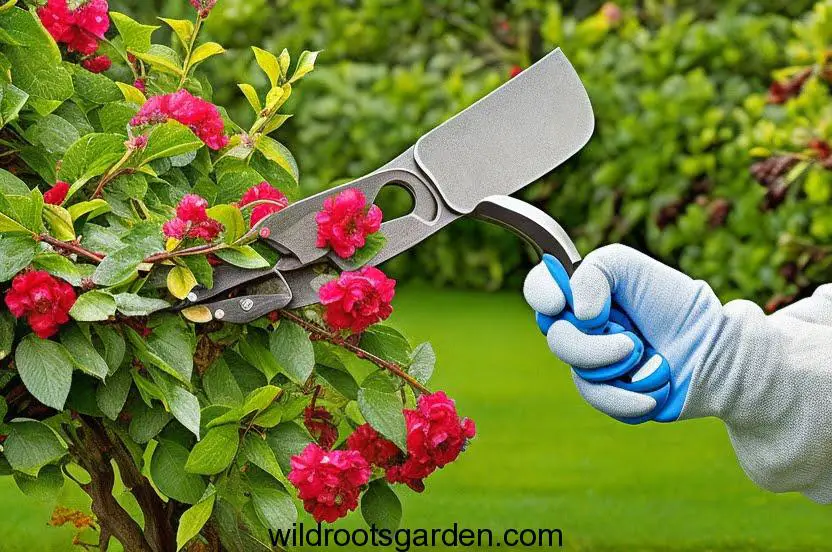
2. Garden Trowel
An excellent tool for planting and transplanting jobs is a garden trowel, a little hand shovel. You can work in limited spaces and dig tiny holes for seedlings or bulbs thanks to its compact size. A comfortable grip and a strong, rust-resistant blade are qualities to look for in a trowel. With a garden trowel in hand, it’s simple to add new plants to your garden or reposition existing ones to promote faster development.
3. Garden Gloves
Gardening gloves are a must for shielding your hands from dirt, thorns, and other foreign items. Choose gloves with flexibility and protection that are constructed of sturdy materials. They protect you from soil-borne infections as well as protect your hands from harm. To keep your gardening gloves clean and ready for the next gardening session, remember to wash and dry them after each use.
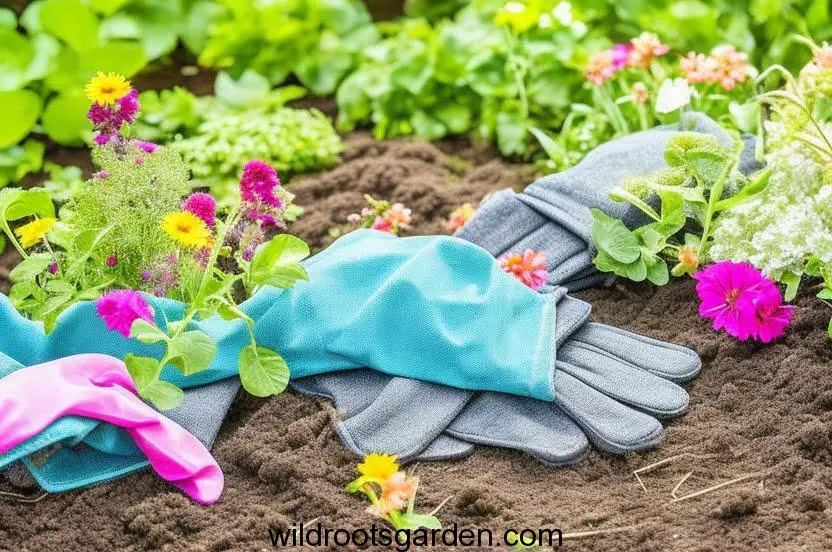
4. Rake
A rake is an essential tool for maintaining a clean and tidy garden. Its long, flexible teeth make it easy to gather leaves, debris, and grass clippings. Additionally, rakes are invaluable for leveling soil and preparing seedbeds. For heavier tasks, such as moving rocks or spreading mulch, choose a sturdy rake with reinforced teeth.
5. Watering Can
Proper watering is crucial for the health of your plants, and a watering can is an excellent tool for this purpose. Its spout allows you to water plants gently without disturbing the soil or creating excessive splashing. Choose a watering can with a balanced design and a detachable rose to control the water flow. Whether you’re watering delicate seedlings or mature plants, watering can be gardening essential.
6. Garden Hoe
A garden hoe is a multipurpose instrument with a long handle and a blade that resembles a flat paddle. It is generally employed for soil cultivation and weeding. Although there are many different varieties of hoes, the draw hoe and the scuffle hoe are the most popular. The scuffle hoe is good for superficial cultivation, while the draw hoe is perfect for chopping weeds at the roots. Using a garden hoe frequently prevents weed growth and preserves the soil’s structure.
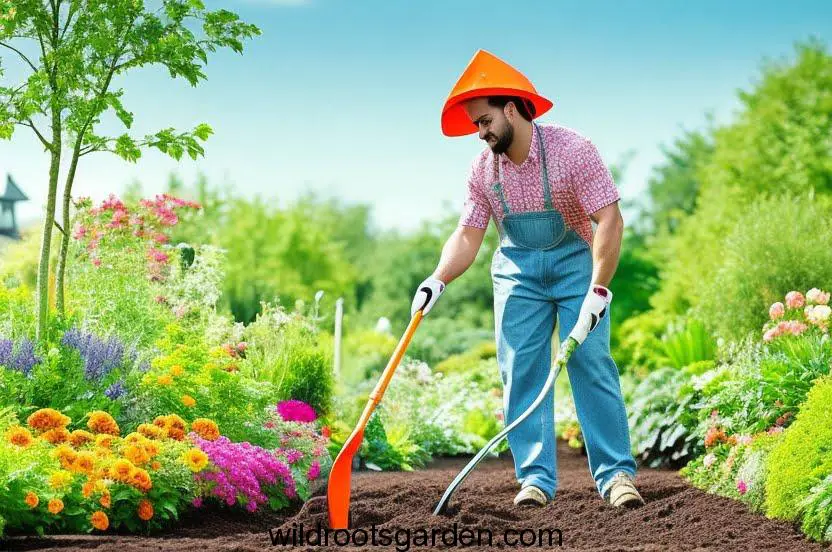
7. Wheelbarrow
Moving heavy objects while gardening, such as dirt, plants, and garden waste, is common. These loads can be easily transported with the help of a wheelbarrow. A wheelbarrow considerably lessens the strain on your back when moving potted plants or transferring soil to fill raised beds. If you want a wheelbarrow that is more stable and balanced, get one with two wheels.
8. Garden Fork
The sturdy garden fork is used to stir the soil, break up clumps, and aerate the earth. It has thick, curved tines. It is especially helpful for labor-intensive jobs like setting up fresh garden beds or compost piles. Choose a garden fork with a robust grip and steel tines that will last. Using a garden fork correctly improves soil drainage and encourages root growth.
9. Pruning Saw
For cutting thicker branches and limbs that pruning shears cannot handle, a pruning saw is essential. Its sharp, serrated blade allows you to make clean cuts without exerting excessive force. When pruning large shrubs or small trees, use a pruning saw to ensure proper plant health and appearance. Remember to keep the blade clean and sharp to maintain its efficiency.
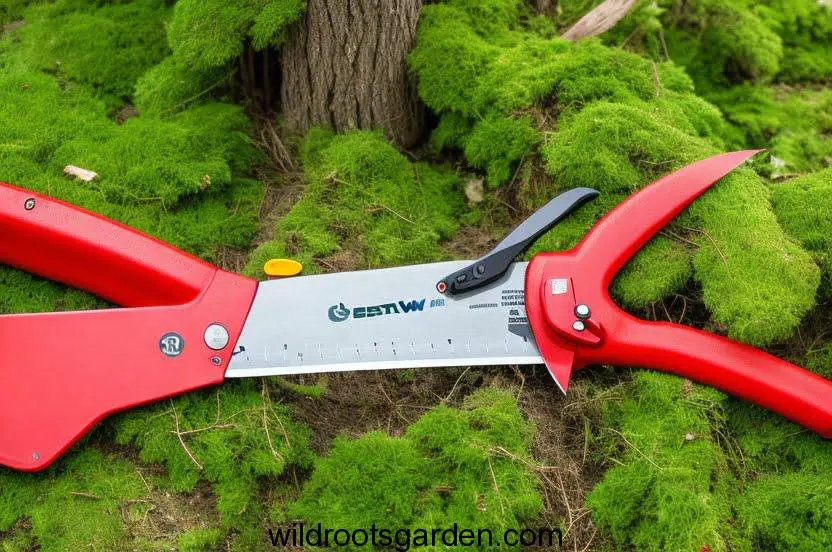
10. Secateurs
Secateurs, also known as hand pruners, are a gardener’s best friend when it comes to precise pruning. These one-handed tools are perfect for cutting small branches, deadheading flowers, and shaping plants. Look for secateurs with a bypass cutting action for clean cuts, and consider models with ergonomic handles for comfortable use during extended gardening sessions.
11. Garden Hose
A garden hose is a crucial item for giving your plants a consistent flow of water. Make an investment in a hose that is strong, kink-resistant, and convenient to store. Based on the size of your garden, take into account the hose’s length to make sure it can reach every part of it without the need for extensions. A dependable garden hose makes watering tasks easier and guarantees that your plants get the moisture they require.
12. Hand Weeder
A hand weeder is a compact but effective tool used to pull out weeds by the roots. Its razor-sharp, V-shaped blade makes it simple to pull weeds from the ground. A weed-free garden is kept through routine manual weeding, which helps prevent weed regrowth. For best results, keep your hand weeder clean and well-kept.
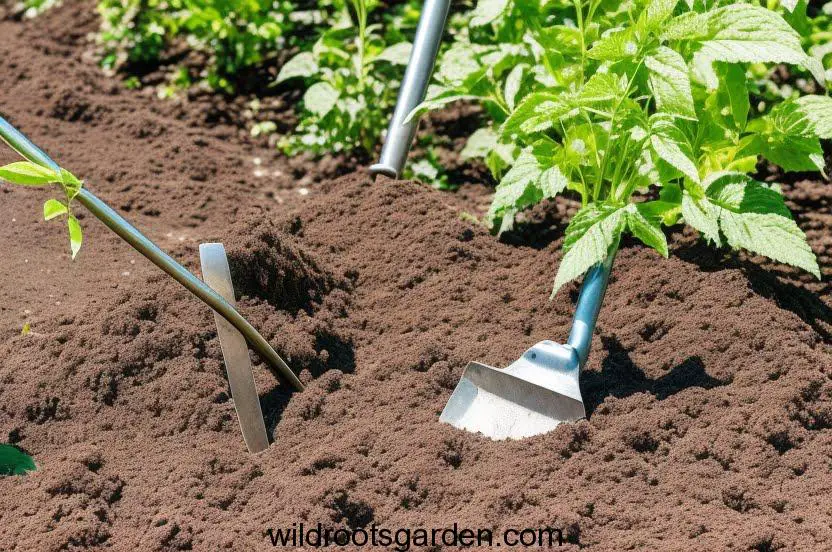
13. Garden Knife
A garden knife, also known as a gardening or soil knife, is a versatile tool with a sharp, serrated blade. It is perfect for various tasks, such as cutting twine, harvesting fruits and vegetables, and dividing perennials. Look for a garden knife with a comfortable handle and a stainless steel blade that resists rust and corrosion.
14. Garden Twine
Garden twine is a strong and durable string used for tying and supporting plants. It is invaluable for training climbing plants, securing stems to stakes, and even crafting trellises. Choose a biodegradable twine option to minimize environmental impact. With garden twine at your disposal, you can keep your plants upright and ensure they grow in the desired direction.
15. Leaf Rake
A leaf rake is made primarily for collecting leaves and other garden trash because of its broad, fan-shaped head. Maintaining your garden free of fallen leaves improves its beauty and guards against any illness problems. Choose a leaf rake that can easily maneuver past plants and other garden barriers thanks to its flexible tines.
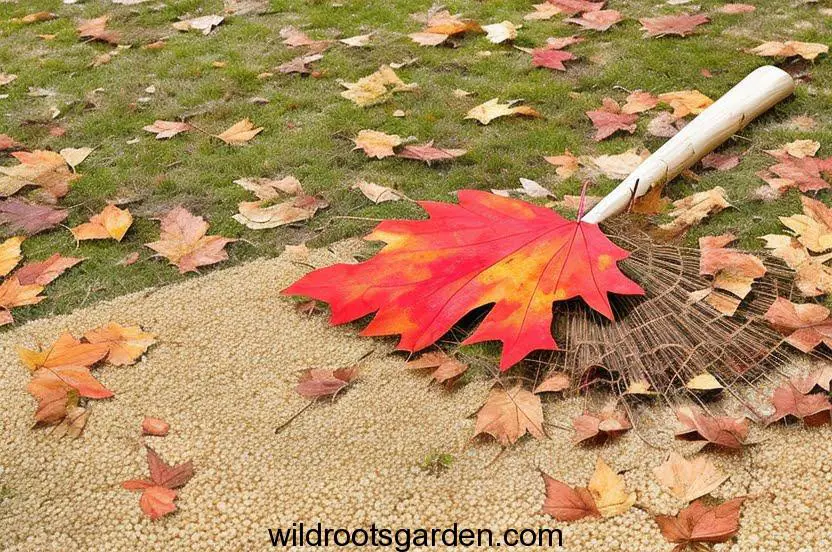
16. Garden Sprayer
In order to apply fertilizers, insecticides, and other liquid treatments to your plants, you need a container with a nozzle called a garden sprayer. Make sure your garden sprayer produces a fine, even spray for uniform coverage to promote good plant health. To avoid clogs and guarantee the correct application of gardening supplies, regularly clean and maintain your garden sprayer.
17. Garden Scissors
Garden scissors, also known as floral scissors, are small, sharp blades used for fine trimming and deadheading. These scissors are perfect for snipping herbs, flowers, and other delicate plants without causing damage. Keep your garden scissors clean and sharp to ensure precise cuts and maintain plant health.
18. Garden Apron
In addition to keeping your clothes clean while gardening, a garden apron also offers practical storage for various equipment and necessities. Choose a sturdy, water-resistant apron with many pockets to store things like gloves, shears, and plant markers. You can easily access all of your gardening tools if you wear a garden apron.
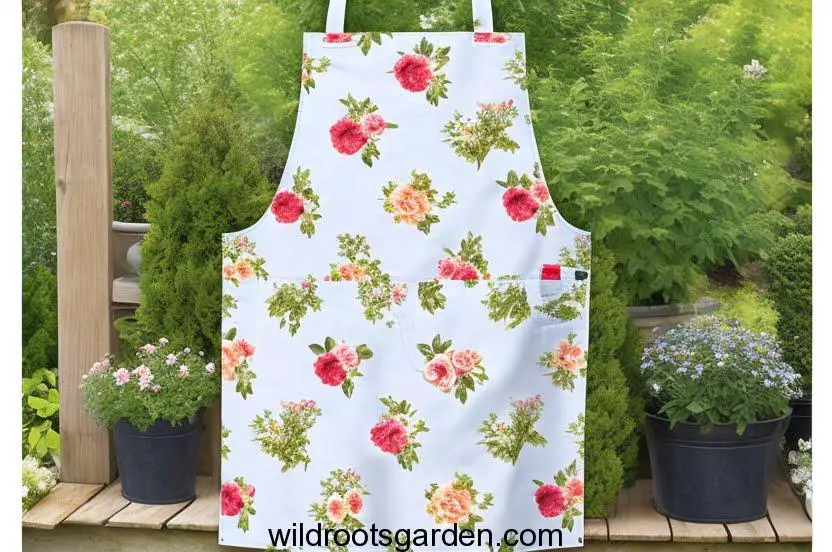
19. Soil pH Tester
Understanding your soil’s acidity or alkalinity depends on the results of a pH test. A tool used to measure this parameter is a soil pH tester, which enables you to modify soil characteristics to suit particular plants. Keep a close eye on the pH of your soil and adjust it as necessary to provide your plants with the best possible environment to grow.
20. Garden Kneeler
A garden kneeler is a padded cushion designed to provide comfort while working on low-lying plants or performing ground-level tasks. It reduces strain on your knees and back, making extended gardening sessions more enjoyable. Look for a garden kneeler with handles for easy carrying and storage.
21. Garden Edger
A garden edger is a device that is used to trim and define the borders of paths, flowerbeds, and lawns. It gives your landscape a polished appearance and stops the grass from intruding on flowerbeds. For effective and precise edging, get an edger with a sharp, revolving blade.
22. Bulb Planter
A useful instrument made expressly for planting flower bulbs at the proper depth is a bulb planter. Because of its cylindrical shape, you may drill regular holes in the soil, positioning bulbs for optimum growth and blooming. You may quickly and effectively plant bulbs for gorgeous spring displays with a bulb planter.
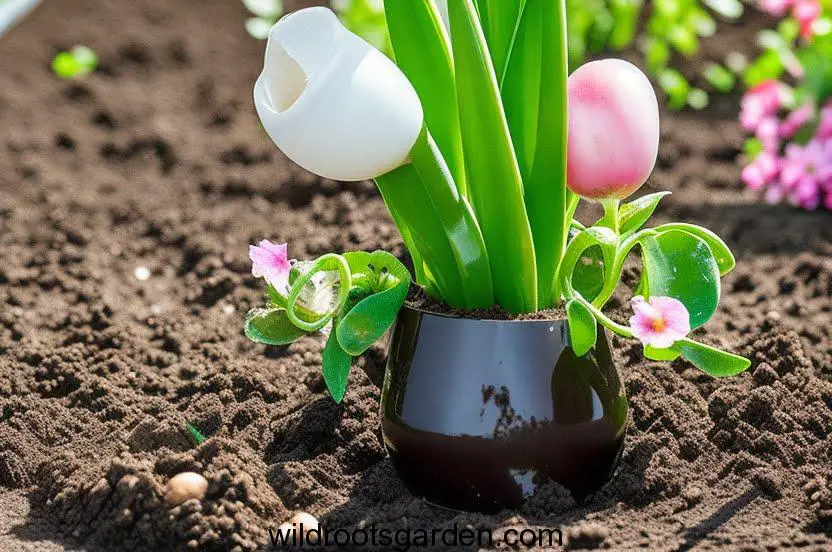
23. Garden Cart
For heavy-duty hauling and transporting tasks, a garden cart is indispensable. This four-wheeled cart can carry soil, plants, rocks, and other gardening materials with ease. Look for a sturdy garden cart with a sizable capacity and comfortable handles for convenient use.
24. Garden Stake
Garden stakes are supportive structures used to prop up plants, especially tall ones, to prevent them from bending or falling over. Stakes come in various materials, including wood, metal, and plastic. Properly securing your plants with garden stakes promotes vertical growth and ensures they reach their full potential.
25. Garden Thermometer
A great tool to gauge the temperature in your garden is a garden thermometer. A thermometer enables you to monitor the temperature and modify your treatment as necessary for plants that are sensitive to temperature changes. A garden thermometer assists you in making knowledgeable decisions for plant health whether you are planting delicate plants or frost-resistant kinds.
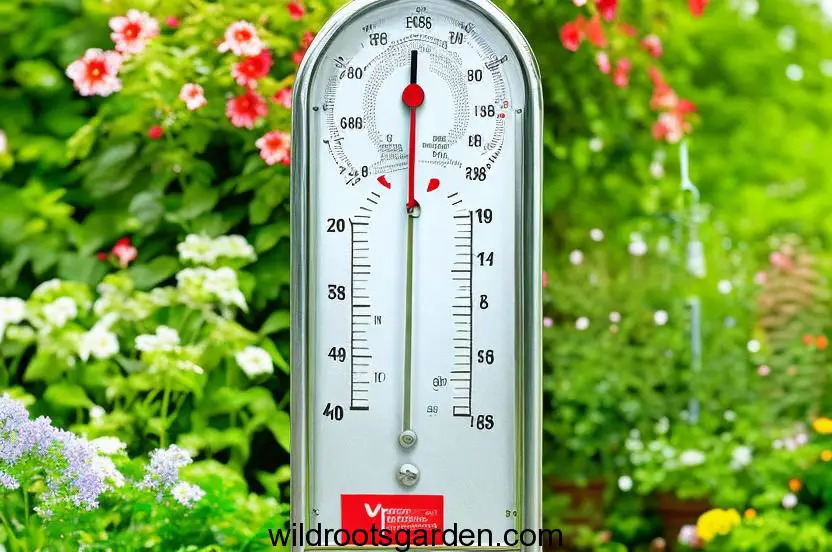
26. Garden Dibber
A basic yet useful instrument for preparing the soil for the planting of seeds or seedlings is a garden dibber. You may create consistent, perfectly spaced holes with pointed ends, creating the ideal conditions for germination. A gardener’s best buddy during planting seasons, garden dibbers come in a variety of materials like wood or metal.
27. Garden Sieve
A garden sieve, also known as a soil sieve or riddle, is used to remove debris and refine the soil before sowing seeds or potting plants. This tool ensures that the soil is free from clumps and stones, creating a fine, smooth texture suitable for optimal plant growth. A garden sieve is particularly useful when preparing seedbeds or potting mixtures.
28. Leaf Mulcher
A leaf mulcher is a device designed to shred leaves into small pieces, creating natural mulch for your garden. Mulch helps retain soil moisture, suppress weeds, and enrich the soil as it breaks down. By using a leaf mulcher, you can turn fallen leaves into a valuable resource for enhancing your garden’s health.
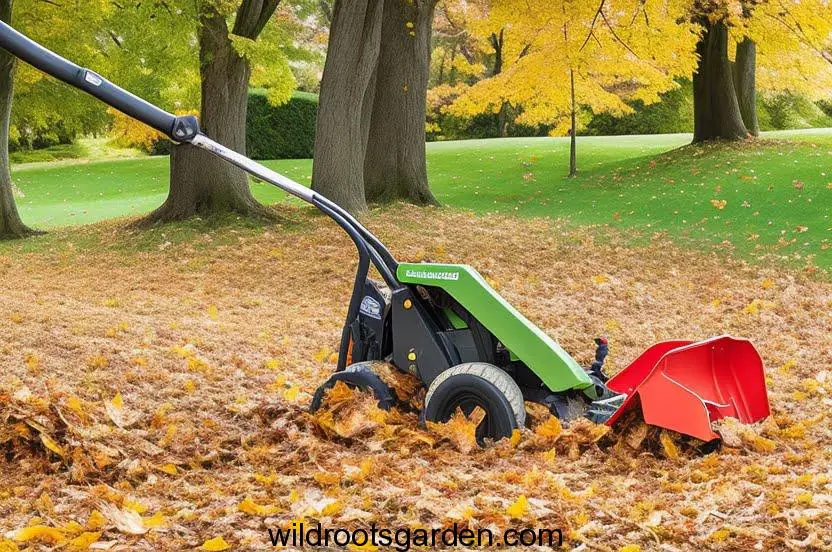
29. Plant Markers
Plant labels, tags, and markers are all necessary for classifying and organizing your plants. Use them to identify various types, keep track of planting dates, or write down particular maintenance instructions. Plant markers can be made from a variety of materials, such as wood, plastic, and metal, and they give your garden a unique touch.
30. Garden Pond Net
A pond net is a helpful tool for clearing leaves and debris off the water’s surface if you have a garden pond. Keeping your pond clean and maintaining water quality with regular maintenance with a pond net ensures a healthy environment for fish and aquatic plants.
31. Garden Duster
A garden duster is a container with a nozzle used to apply powdered pesticides, fungicides, or insecticides to your plants. This tool ensures safe and accurate application, targeting pests while minimizing exposure to beneficial insects and other wildlife.
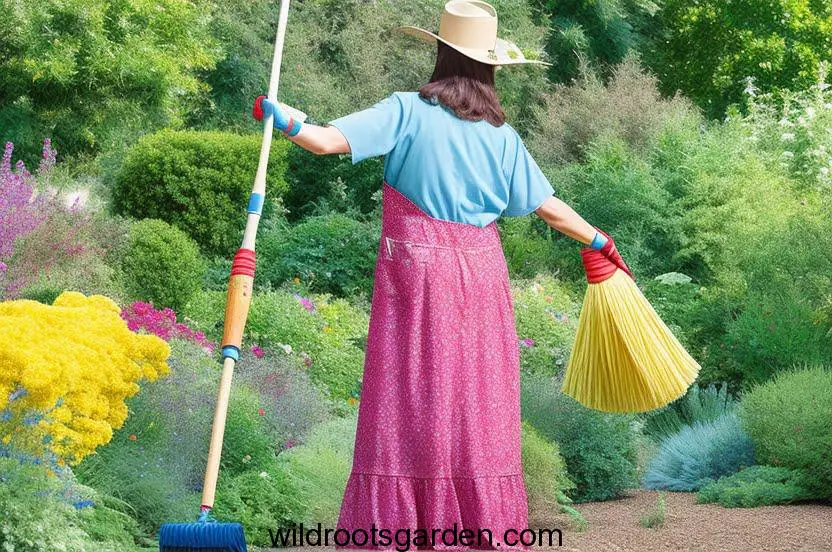
32. Garden Pruner
A garden pruner, also known as a pole pruner or tree pruner, is a long-reach tool used for trimming high branches and shrubs. Its extended reach allows you to shape trees and reach inaccessible areas without the need for ladders or climbing.
33. Garden Tool Set
A garden tool set is a comprehensive kit containing various essential gardening tools. It usually includes items like hand trowels, pruners, garden gloves, and a hand weeder. A garden tool set is an excellent choice for beginners, as it provides all the necessary tools in one convenient package. It also makes for a thoughtful and practical gift for gardening enthusiasts.
FAQs
Q: How often should I sharpen my pruning shears?
A: It’s essential to keep your pruning shears sharp for efficient and clean cuts. Sharpen them at least once every gardening season, or more frequently if you notice they are not cutting as well as they used to.
Q: Can I use regular household scissors for gardening tasks?
A: While regular household scissors may work for light tasks, they are not designed for gardening and may become damaged or dull quickly. It’s best to invest in proper garden scissors or secateurs for gardening activities.
Q: How can I prevent rust on my garden tools?
A: To prevent rust, ensure you clean and dry your garden tools after each use. Applying a light coat of oil on metal parts can also help protect them from rusting.
Q: What type of garden hose is best for watering my plants?
A: Opt for a durable, kink-resistant garden hose with a diameter of at least 5/8 inches. This size ensures an adequate water flow for watering your plants.
Q: Can I use a garden edger to create borders for flowerbeds?
A: Absolutely! A garden edger is perfect for creating clean and defined edges for flowerbeds, walkways, and other garden features.
Q: Do I need a garden kneeler if I already have knee pads?
A: A garden kneeler provides additional support and cushioning for your knees and can be more comfortable during extended gardening sessions compared to knee pads.
Conclusion
Mastering the art of gardening requires not only passion and dedication but also the right tools. The Essential 33 + name of tools for gardening outlined in this guide will help you nurture your garden and create a beautiful and thriving oasis. From pruning shears to garden carts, each tool serves a specific purpose in making your gardening experience enjoyable and successful. Remember to care for your tools, and they will reward you with years of service in creating your dream garden.

